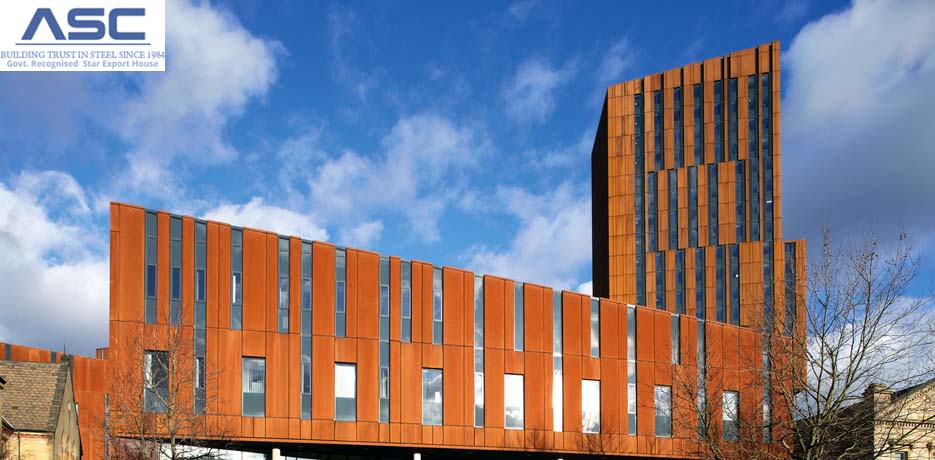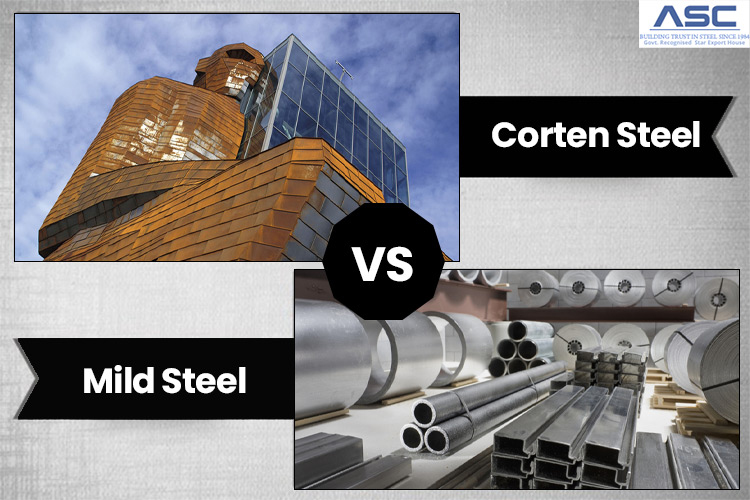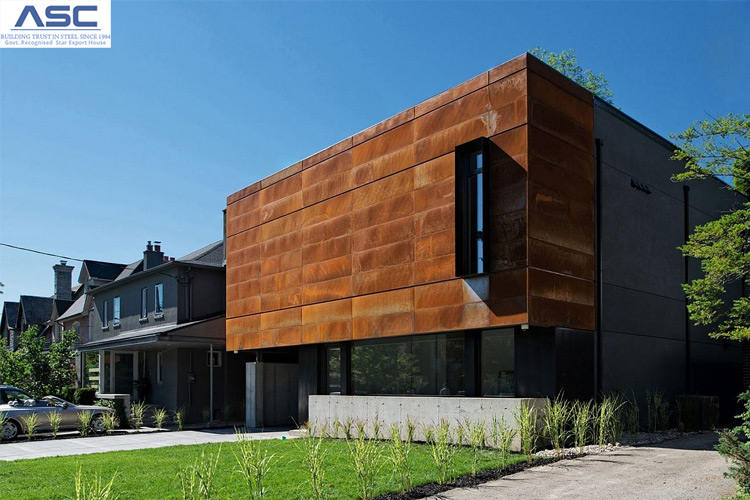Properties of Weathering Steel
by AMC
Posted on February 06, 2022 at 03:33 PM

What is Weathering Steel?
Weathering steel, also known as corten steel or atmospheric corrosion resistant steel, is a type of steel alloy that forms a protective layer of rust when exposed to the elements. This rust layer acts as a barrier, protecting the steel from further corrosion.
Weathering steel is known for its unique rust-colored appearance and exceptional resistance to atmospheric corrosion, making it a popular choice for architectural and landscaping applications, as well as for use in construction and transportation.
The mechanical properties of weathering steel, such as tensile strength and yield strength, are also high, making it a durable and long-lasting material.
How does Weathering Steel work?
Weathering steel is different from other corrosion-resistant steels, like austenitic stainless steel, which doesn't let rust build up. Weathering steel can rust, but only on its outer layer. If the layer of rust on the outside has grown, the rust does not get any deeper into the weathering steel. The rusty coating on the surface protects the steel from further rusting. The rust layer that forms on the plain carbon steel is porous and breaks off, which lets another layer form deeper in the material. This keeps happening until the steel is no longer useful. Because of the alloys, the first layer of rust on the metal sticks to the steel. So, there is no need to put a protective layer on the metal.
Chemical Composition of Weathering Steel
As a low-carbon steel, weathering steel usually takes in less than 0.3% of its weight in carbon. Because it has so little carbon, it is both hard and easy to shape. These types of steel are made with alloys that give them high strength and resistance to corrosion. The three most important alloying materials in installation weathering steel are nickel, copper, and chromium.
| Tab 1 Chemical composition of commonly used weathering steels | |||||
| Elements / Steel type | Unit | ASTM A-242 (COR-TEN A) | ASTM A-588 Gr. A (COR-TEN B) | ||
| Typical concentration | Typical concentration | ||||
| Carbon (C) | % | 0.15 maximum | 0.019 maximum | ||
| Silicon (Si) | % | 0.3-0.65 | |||
| Manganese (Mn) | % | 1.0 maximum | 0.8-1.25 | ||
| Phosphorus (P) | % | 0.015 maximum | 0.15 maximum | 0.04 maximum | 0.04 maximum |
| Sulphur (S) | % | Less than 0.05 | Less than 0.05 | ||
| Copper (Cu) | % | 0.2 minimum | 0.25-0.4 | 0.25-0.4 | 0.3-0.4 |
| Chromium (Cr) | % | 0.5-0.8 | 0.4-0.65 | 0.6-1.0 | |
| Nickel (Ni) | % | 0.5-0.65 | 0.4 maximum | 0.02-0.3 | |
| Vanadium (V) | % | 0.02-0.10 | |||
Weathering Steel Mechanical Properties
Tab 2 lists the usual mechanical properties of weathering steels. Steels have different mechanical properties depending on how they are processed.
| Tab2 Typical mechanical properties of weathering steels | ||||
| Steel grade | Thickness | Mechanical properties | ||
| Yield strength | Tensile strength | Elongation | ||
| mm | Newton/sq mm | Newton/sq mm | % minimum | |
| COR-TEN A | 2-13 | 345 | 485 | 20 |
| COR-TEN B | 2-60 | 345 | 485 | 19 |
Conclusion
Weathering steel is a unique type of steel alloy that possesses excellent properties that make it suitable for various applications. Its ability to form a protective rust layer when exposed to the elements makes it highly resistant to atmospheric corrosion. This, combined with its high mechanical properties, such as tensile and yield strength, makes it a durable and long-lasting material. Its rust-colored appearance and exceptional resistance to corrosion make it a popular choice for architectural and landscaping applications, as well as for use in construction and transportation. Weathering steel is a versatile material that offers many advantages, making it a popular choice for designers, engineers, and builders a like.

What is Weathering Steel? - Its Benefits, Grades & Chemical Composition
Weathering steel is a family of low-carbon steels that have other elements mixed in with the carbon and iron.

